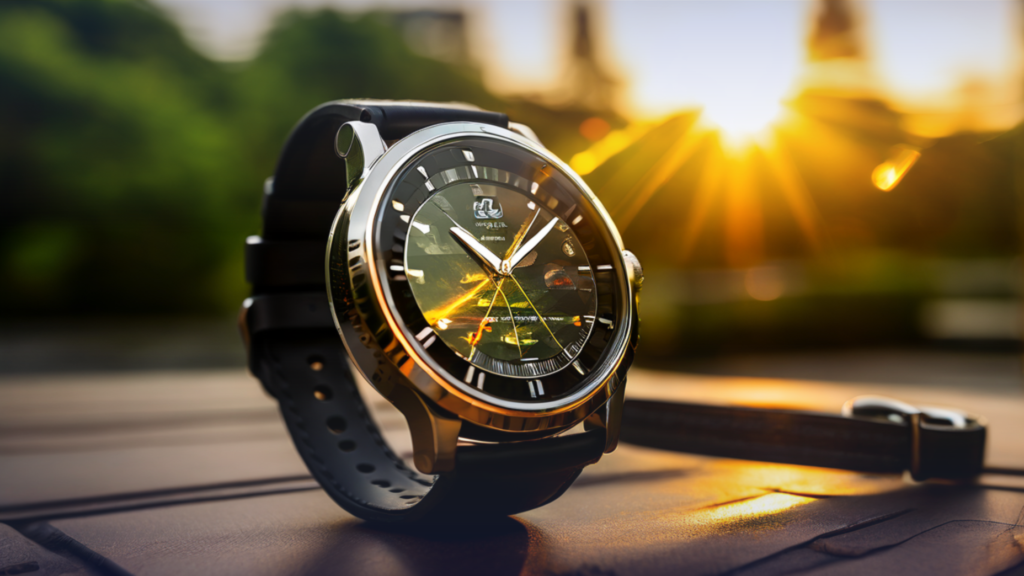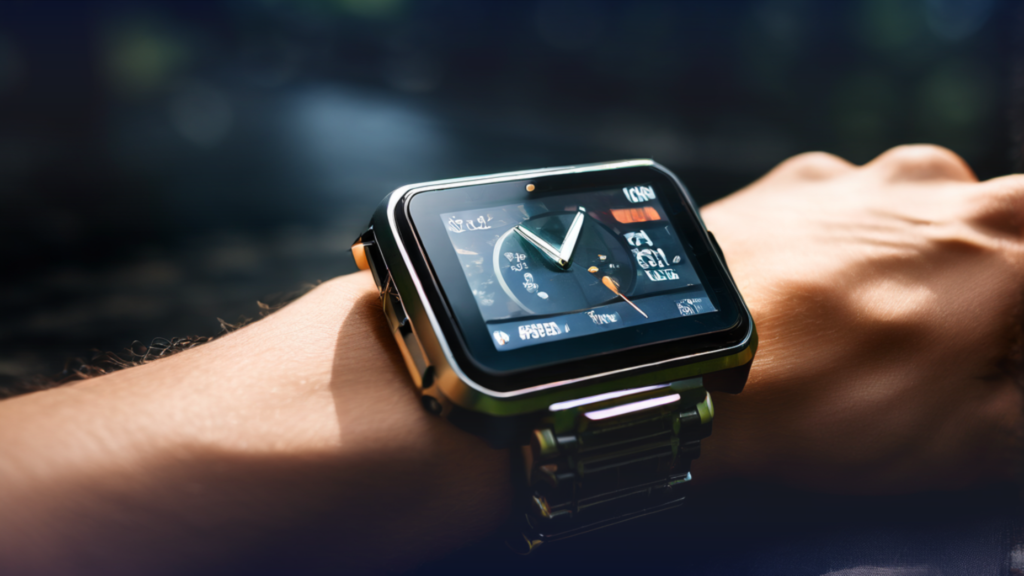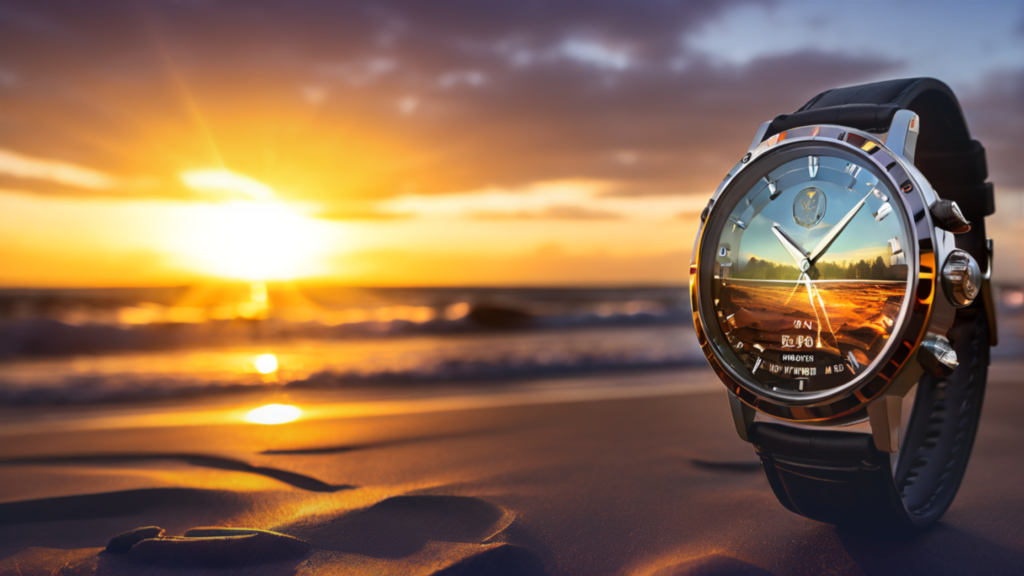Tired of charging your smartwatch every other night? In 2025, the best solar smartwatches solve that pain point by using solar charging technology that keeps your watch running for weeks—or even months. Whether you’re an athlete, hiker, or an eco-conscious professional, these smartwatches offer maximum power with minimal charging. Let’s dive into the top models, compare features, and see why solar wearables are leading the future.
Longer, Greener with the Best Solar Smartwatch in 2025

What Is a Solar Smartwatch & Why It’s Trending
A solar smartwatch uses photovoltaic panels—typically built into the watch face—to convert sunlight into energy. These watches supplement or replace traditional charging, offering longer battery life and sustainable energy usage. In 2025, brands like Garmin, Casio, Citizen, and Haylou are pushing boundaries in durability, fitness tracking, and eco tech.
Top 6 Best Solar Smartwatches of 2025 (Ranked & Compared)
| Smartwatch | Solar Battery Life | Notable Features | Price Tier | Best For |
| Garmin Instinct 2 Solar | Unlimited (sunlight) | Rugged GPS, IoT sync, solar-only mode | $$$ | Hikers, Military, Adventurers |
| Casio G-Shock GBD-H2000 Solar | Months per charge | Water-resistant, shockproof, solar assist | $$ | Outdoor & Urban Wear |
| Garmin Forerunner 955 Solar | 20+ days | Lightweight, touchscreen, sports tracking | $$$ | Triathletes, Runners |
| Citizen Eco-Drive Proximity | 6 months+ | Analog-digital hybrid, solar quartz accuracy | $$$ | Professionals, Travelers |
| Haylou Solar Plus RT3 | 20–25 days | AMOLED, Bluetooth calling, fitness monitoring | $ | Budget-conscious users |
| Seiko Prospex SNE | 10 months reserve | Dive-ready, ISO-certified, classic analog design | $$$ | Divers, Watch Enthusiasts |
Pro Tip: Compare based on your lifestyle—don’t just go by battery life.
Why Choose a Solar-Powered Smartwatch in 2025?
- Eco-Friendly Tech: Save energy, reduce waste—your wristwatch can be your greenest gadget.
- Battery Autonomy: With solar assist, some watches go weeks without charging.
- Built to Last: Most are water-, shock-, and heat-resistant—ready for anything.
- Emergency Power: In off-grid or survival scenarios, solar charging becomes a literal lifesaver.
Limitations of Solar Smartwatches (And How to Work Around Them)

- Light Dependency: Low sunlight = less power. Choose hybrid solar-smartwatches with strong reserves.
- Higher Initial Price: Solar tech adds cost—but also longevity.
- Bulkier Design: Panels and rugged builds make some models chunky.
- Slow Recharge via Solar Alone: Great as a supplement, not always as the only power source.
How Does Solar Charging Work in Smartwatches?
Solar cells capture natural and artificial light and convert it to electrical energy stored in an internal battery. Advanced power management systems then distribute this power to key smartwatch functions—like GPS, heart rate monitoring, or sleep tracking.
Even cloudy day exposure can give you usable charge!
How to Maximize Your Solar Smartwatch Battery
- Sunlight Boosts: Aim for 1–2 hours of daily sunlight exposure.
- Use Battery Saver Mode: Disable GPS when not needed, dim the display.
- Clean Regularly: Dust or sweat on the solar panel = weaker charge.
- Avoid Overcharging with USB: Let solar handle most of the load for longevity.

What About Cloudy Weather or Indoor Use?
Solar smartwatches like the Garmin Tactix 7 Pro and Haylou Solar Plus RT3 feature internal batteries that last weeks, even when solar input is low. They’re designed to adapt, ensuring that even winter won’t leave you powerless.
Top Solar Smartwatches of 2025
Garmin Instinct 2 Solar – Best for Rugged Outdoor Use
The Garmin Instinct 2 Solar is the go-to choice for adventure seekers, survivalists, and military professionals. Its unlimited solar battery life—in smartwatch mode under sufficient sunlight—sets it apart from all competitors. Built to U.S. military standards (MIL-STD-810), it’s shock-, thermal-, and water-resistant up to 100 meters. Key features include multi-GNSS support, heart rate and sleep monitoring, VO2 max, Pulse Ox, and smart notifications.
It’s also compatible with Garmin Connect™ and Garmin Pay, making it a smart tool both on the trail and in town. If you live an active lifestyle and need a device that just won’t quit, this is it.
Pros:
- Truly solar-powered (no plug-in needed if you’re outdoors)
- Built for harsh conditions
- Long list of health and GPS metrics
Cons:
- Bulky for smaller wrists
- Higher price range
Garmin Forerunner 955 Solar – Top Choice for Runners & Athletes
For endurance athletes, triathletes, and data-driven runners, the Forerunner 955 Solar delivers where it matters. Its Power Glass™ solar charging lens provides up to 20 days of battery life in smartwatch mode and up to 49 hours in GPS mode with solar exposure. The touchscreen and five-button interface make navigation effortless during workouts.
Features like real-time stamina tracking, training readiness score, race widget, and HRV status give serious athletes a measurable edge. Plus, full-color topographic maps, music storage, and multi-band GPS make it ideal for outdoor long-distance runners.
Pros:
- Premium performance metrics
- Lightweight yet durable
- Solar panel integration doesn’t add bulk
Cons:
- Premium pricing
- Not ideal for casual users
Casio G-Shock GBD-H2000 Solar – Toughest Solar Smartwatch
Casio’s G-Shock series has always been synonymous with durability, and the GBD-H2000 Solar takes that legacy into the smart era. It combines shock resistance, solar charging, and six built-in sensors for compass, altitude, barometric pressure, temperature, heart rate, and step tracking.
With Bluetooth connectivity for smartphone syncing and G-Shock Move app support, it bridges analog ruggedness with digital intelligence. Plus, it’s water-resistant up to 200 meters and features a high-contrast MIP display that remains readable even in harsh sunlight.
Pros:
- Military-grade toughness
- Long battery life with solar assist
- Extremely reliable for adventure
Cons:
- Limited app ecosystem
- Interface can feel outdated to smartwatch-first users
Citizen Eco-Drive Proximity – Best Hybrid Analog Solar Smartwatch
For professionals who prefer the style of a traditional timepiece with the functionality of a smart assistant, the Citizen Eco-Drive Proximity is a classy compromise. It features Bluetooth syncing, call and text alerts, calendar reminders, and Eco-Drive solar charging, which can last up to 6 months on a full charge.
While it doesn’t offer touchscreen controls or fitness tracking, its value lies in its minimalist, no-fuss design, making it perfect for office settings or formal wear. It’s iOS and Android compatible via Citizen’s proprietary app.
Pros:
- Timeless design with smart features
- Excellent battery reserve
- No daily charging required
Cons:
- No GPS or advanced health tracking
- Learning curve for app configuration
Haylou Solar Plus RT3 – Best Budget Solar Smartwatch
If you’re looking for solar functionality on a budget, the Haylou Solar Plus RT3 offers tremendous value. With a vibrant 1.43-inch AMOLED display, Bluetooth calling, heart rate and SpO2 tracking, and 20-day battery life, it punches well above its weight for under $80.
Although it doesn’t have true photovoltaic solar panels like Garmin or Citizen, it offers “solar” in name and stamina—lasting weeks per charge thanks to efficient battery management. This makes it a favorite among casual users who want smartwatch features without daily charging.
Pros:
- Affordable with premium design
- Great battery endurance
- AMOLED display and health tracking features
Cons:
- Not true solar charging (name only)
- Lacks high-end GPS or app integration
Seiko Prospex SNE Series – Best Solar Dive Watch
Seiko’s Prospex SNE series is built for professional divers and analog watch lovers who want solar convenience. With ISO-certified 200m water resistance, luminescent hands, and solar quartz accuracy, it’s built for both form and function.
A single full charge offers up to 10 months of reserve, meaning you’ll hardly ever think about charging. No apps or Bluetooth here—just a reliable, beautiful watch that lasts.
Pros:
- Ideal for diving and deep-sea adventures
- Classic design with rugged specs
- Massive power reserve
Cons:
- No smart features
- Higher cost for analog functionality
What to Consider Before Buying
- Do You Need GPS?: Go Garmin.
- Style or Function First?: Citizen and Seiko nail the hybrid style.
- Budget Matters?: Haylou offers incredible value.
- Going Off-Grid?: Choose models with long reserves and rugged build.
People Also Ask
Do solar smartwatches charge indoors?
Yes, but slowly. Natural sunlight is 3–10x more efficient than indoor light sources.
Which brand has the best solar smartwatch in 2025?
Garmin leads in rugged performance, while Haylou dominates budget-friendly innovation.
Are solar smartwatches more durable?
Typically, yes. They’re built for outdoors, often meeting military durability standards.
The Future of Solar Wearables
In 2025 and beyond, solar smartwatches are becoming lighter, smarter, and more deeply integrated into your digital life. Expect:
- Smarter power balancing
- Thinner solar panels
- Smart home integration
- Fully solar-only watches with AI-driven efficiency
Final Verdict: Which Solar Smartwatch Should You Choose?
If you’re always outdoors, Garmin Instinct 2 Solar is unbeatable. If budget is a concern, Haylou Solar Plus RT3 offers unmatched value. For timeless elegance with solar backup, go Citizen Eco-Drive.
No matter your pick, solar smartwatches are the future-proof choice for eco-minded, battery-conscious users.

